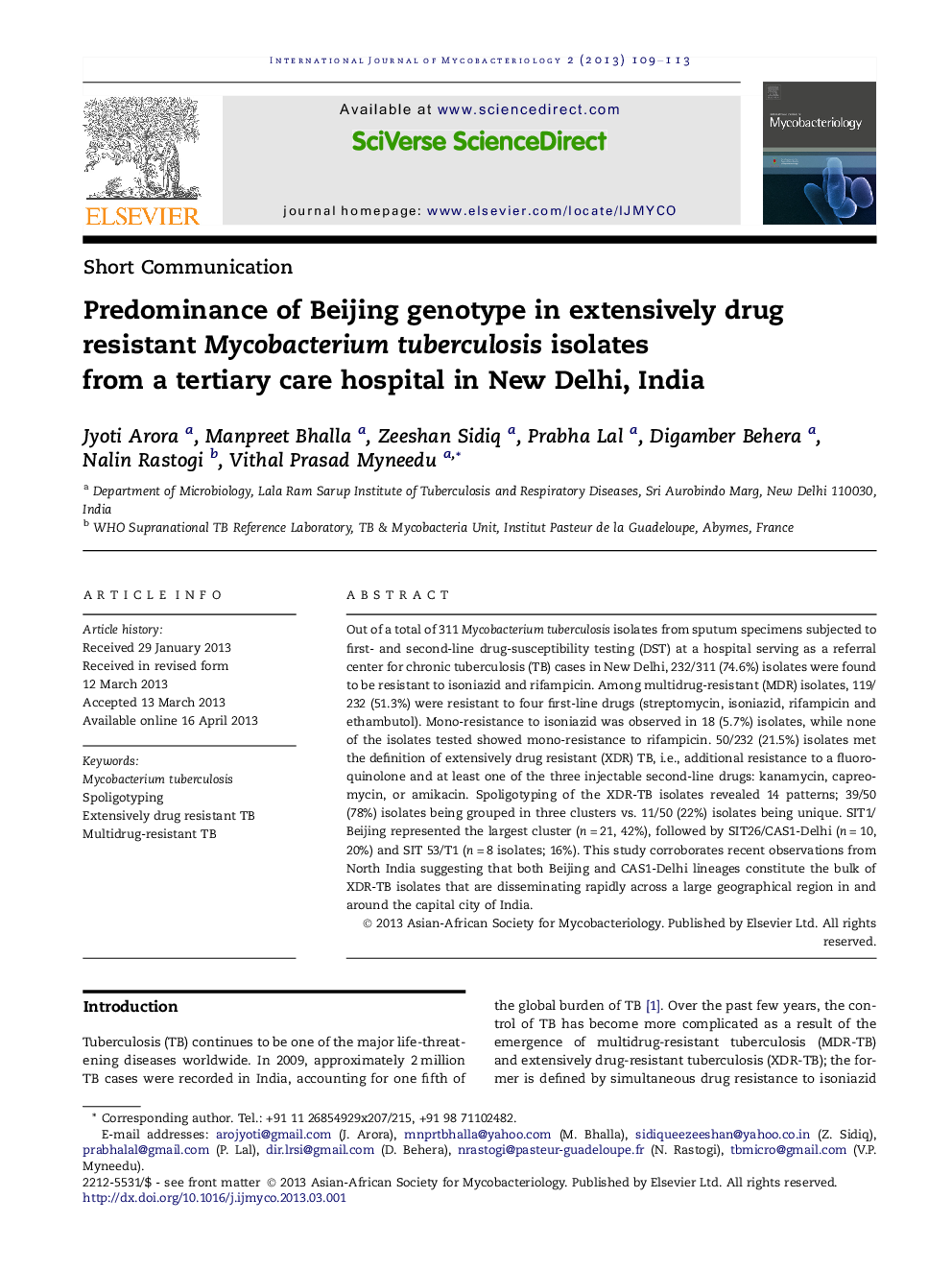| Article ID | Journal | Published Year | Pages | File Type |
|---|---|---|---|---|
| 3405011 | International Journal of Mycobacteriology | 2013 | 5 Pages |
Out of a total of 311 Mycobacterium tuberculosis isolates from sputum specimens subjected to first- and second-line drug-susceptibility testing (DST) at a hospital serving as a referral center for chronic tuberculosis (TB) cases in New Delhi, 232/311 (74.6%) isolates were found to be resistant to isoniazid and rifampicin. Among multidrug-resistant (MDR) isolates, 119/232 (51.3%) were resistant to four first-line drugs (streptomycin, isoniazid, rifampicin and ethambutol). Mono-resistance to isoniazid was observed in 18 (5.7%) isolates, while none of the isolates tested showed mono-resistance to rifampicin. 50/232 (21.5%) isolates met the definition of extensively drug resistant (XDR) TB, i.e., additional resistance to a fluoroquinolone and at least one of the three injectable second-line drugs: kanamycin, capreomycin, or amikacin. Spoligotyping of the XDR-TB isolates revealed 14 patterns; 39/50 (78%) isolates being grouped in three clusters vs. 11/50 (22%) isolates being unique. SIT1/Beijing represented the largest cluster (n = 21, 42%), followed by SIT26/CAS1-Delhi (n = 10, 20%) and SIT 53/T1 (n = 8 isolates; 16%). This study corroborates recent observations from North India suggesting that both Beijing and CAS1-Delhi lineages constitute the bulk of XDR-TB isolates that are disseminating rapidly across a large geographical region in and around the capital city of India.
